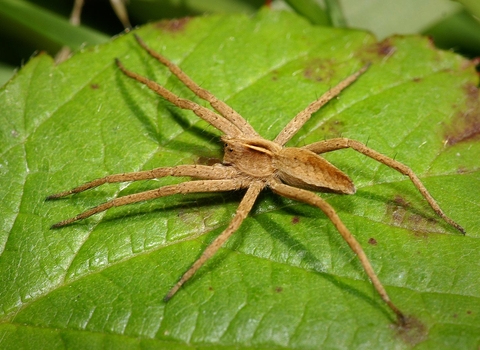
Nursery Web Spider ©David Longshaw
Nursery web spider
A common spider of heathland and grassland, the Nursery web spider has brown and black stripes running the length of its body. It is an active hunter, only using its silk to create a protective tent for its young.
Scientific name
Pisaura mirabilisWhen to see
May to JulySpecies information
Category
Statistics
Body length: 1.5cmCommon.
About
The Nursery web spider is a common spider of grassland and scrub, and is often seen sunbathing among Brambles and Stinging Nettles. The adults are active hunters and do not spin a web to catch food, instead using a quick sprint to capture flies and other insects. The female carries her large, round egg-sac in her fangs. When the young are about to hatch, she builds a silk sheet among the vegetation to act as a tent, sheltering them until they are old enough to leave on their own.How to identify
The Nursery web spider is a relatively large, slender-bodied spider. It is pale grey-brown with a pattern of dark brown and black stripes running the length of its body.Distribution
Widespread.Did you know?
Mating is a dangerous game for male Nursery web spiders, so they present a gift of food to the female while laying perfectly still and pretending to be dead. When the female investigates the food, the male will suddenly jump up and mate with her.Watch
Nursery web spider (https://vimeo.com/500928329)
Nursery web spider ©Tom Hibbert
